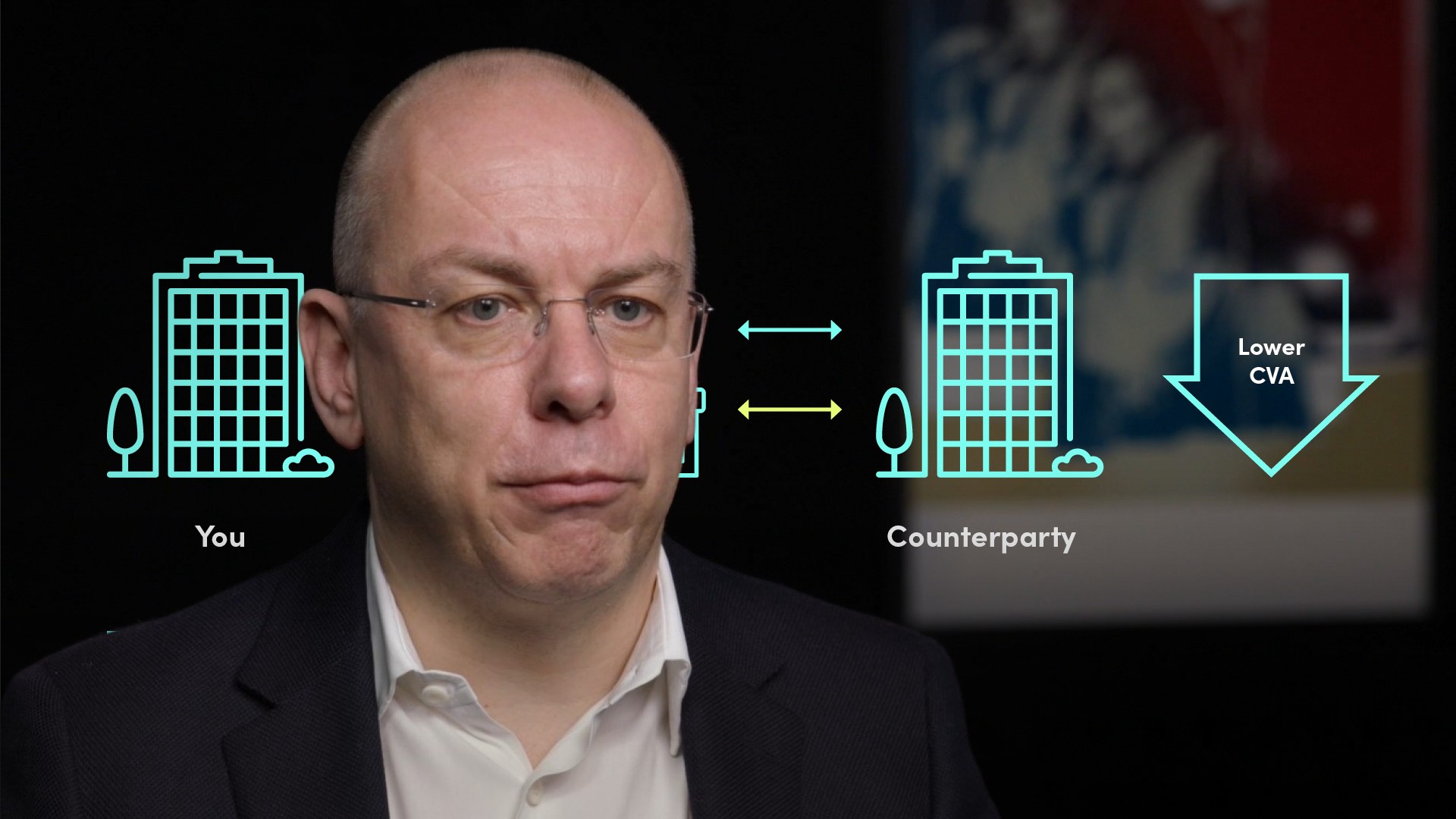
Introduction to CVA

Steven Marshall
25 years: Derivatives trading
In his previous video, Steven discussed several different valuation adjustments which are taken into account to adjust the value of derivative trades to consider exposures such as credit, funding, and capital. In this video, he focuses on the first of these, credit, and the relevant adjustments; CVA and DVA.
In his previous video, Steven discussed several different valuation adjustments which are taken into account to adjust the value of derivative trades to consider exposures such as credit, funding, and capital. In this video, he focuses on the first of these, credit, and the relevant adjustments; CVA and DVA.
Subscribe to watch
Access this and all of the content on our platform by signing up for a 7-day free trial.

Introduction to CVA
13 mins 39 secs
Key learning objectives:
Define Credit Valuation Adjustment
Understand how the CVA is determined
Outline the main drivers of CVA
Define the Debit Valuation Adjustment
Overview:
It's no surprise that CVA has become one of the most debated topics in financial derivatives during the last decade. CVA is typically driven by finance departments, as financial accounting standards now require CVA to be reported in financial statements as a matter of course.
Subscribe to watch
Access this and all of the content on our platform by signing up for a 7-day free trial.
What is Credit Valuation Adjustment?
The fair value adjustment which measures the value of the expected credit loss on a derivative transaction.
Financial regulators and accounting companies gradually began to accept CVA as a required adjustment to assess the fair value of a trade, and CVA has become a crucial component in the valuation of a derivative over the last decade.
How is CVA determined?
CVA is the expected value of counterparty credit losses on a derivative.
“Expected value” has a mathematical definition, which is taking all future possible outcomes, multiplying them by the probability each outcome occurs, and then summing them all together.
What are the main drivers of CVA?
- The credit worthiness of the counterparty.
- The present value of the underlying derivative, and the expected profile of the derivative.
- Trades with a longer maturity will result in a larger CVA.
What is the role of the ISDA Master Agreement?
Normally derivative transactions are transacted under a legal agreement called an ISDA Master Agreement. This legal framework allows for trade netting, which means that if we owe money on one transaction and are owed money by the same party on another, we can net these off when calculating what is owed in the event of bankruptcy.
This can complicate the calculation of CVA because we may need to consider netting thousands or tens of thousands of transactions. To calculate the CVA of the entire portfolio, we must compute the value of all of these transactions over time.
What is Debit Valuation Adjustment?
An asset on the balance sheet which adjusts the value of a derivative portfolio to take into account a firm's own credit risk, and the probability that they may default. Accounting-wise, it can be viewed as the contra entry for the counterparty's CVA reserve against you.
Its use is viewed as somewhat problematic because it is an asset that gains in value when the firm's credit worthiness decreases and is not "real" in the same sense that cash in the bank is.
Subscribe to watch
Access this and all of the content on our platform by signing up for a 7-day free trial.

Steven Marshall
There are no available Videos from "Steven Marshall"



























